Discover how to build a powerful SEO strategy for enterprise websites—boost visibility, enhance performance, and drive long-term digital growth.
Enterprise websites are broad-based digital assets intended to support high-traffic user bases across multiple product lines, geographies, and stakeholder groups. Such sites do not need simple integrations and scale performance.
A robust enterprise SEO is not only nice to have but a rather essential component. Businesses must have an effective search engine optimization plan as competition is intense and has thousands of pages to find, interact and have returns on investment.
In this article, you will find out about the peculiarities of the life of big enterprises and you will undergo the best process of creating a strategy on the scheme of enterprises SEO, which will help you to acquire stable and measurable growth of traffic.
Table of Contents
1. Understanding the Unique SEO Challenges of Enterprise Websites
2. Core Elements of a Powerful SEO Strategy
2.1. Scalable On-Page Optimization
2.2. Internal Linking Strategy
2.3. Structured Data and Schema Implementation
2.4. Mobile-First and Technical Resilience
2.5. Enterprise Link Building and Digital PR
2.6. Scalable Outreach and Brand Monitoring
3. Measurement and Continuous Improvement
3.1. Define KPIs and Success Metrics
3.2. Use Enterprise SEO Tools
3.3. SEO Reporting for Multiple Teams
3.4. Continuous Testing and SEO Experiments
4. Governance, Collaboration & Workflow Management
4.1. Build Cross-Functional SEO Teams
4.2. Establish SEO Governance
4.3. Stakeholder Training and Enablement
4.4. Use Agile Workflows and Project Management
5. Best Practices for Enterprise SEO Strategy Development
5.1. Scalability-First Mindset
5.2. Martech Integration
5.3. Stay Agile with Algorithm Updates
5.4. Treat SEO as a Long-Term Investment
Conclusion
1. Understanding the Unique SEO Challenges of Enterprise Websites
Enterprise websites have scale issues, millions of pages, thousands of subdomains, and intricate navigational schemes. Such massive numbers enhance the possibility of technical problems, content replications, and ineffectiveness in SEO.
Due to multiple stakeholders (IT, content, legal, marketing) involved in the process of implementation, it becomes slow, and the directions of SEO priorities are misaligned, resulting in the execution of strategy being partitioned.
Legacy systems usually have no features of being designed for SEO and complicate even simple optimization requirements.
International SEO is associated with such challenges as hreflang, regional keywords, and language duplications, and preparing them through strictly localized techniques and technical configurations is required.
Lastly, when decisions take too long internally, it can clog much needed updates thus forcing enterprises behind faster moving enterprises in terms of search visibility.
2. Core Elements of a Powerful SEO Strategy
2.1. Scalable On-Page Optimization
Create metadata, such as title tags, meta descriptions, and headers, on thousands of enterprise pages through dynamic templates. This makes it consistent, keyword aligned, and the indexing is done better without any manual involvement.
Make use of automation as an extension of your CMS to deliver real-time changes and optimization to SEO. On-page optimization at scale kills bottlenecks, increases visibility, and maintains your content search-optimized at all levels of the evolution of your enterprise website.
2.2. Internal Linking Strategy
Construct a strong internal linking structure to improve web crawling performance and strategically assign page authority. Attach popular and authority pages with pages that go deeper into conversion to lead visitors and search engines through the site.
Automate internal linking systems within blogs, product pages and landing pages upon match of category and/or keyword. A good internal connectivity enhances dwell time, lower bounce rate, and reinforces topical clusters.
2.3. Structured Data and Schema Implementation
Increase search discovery with the use of structured data (schema) to all major page types, product, blog, FAQ, and review pages. Rich snippets boost the CTR and make search engines have the context of the page.
Scale schema markup with your CMS or tag manager. Concerning enterprise sites, schema correctness enhances content findability, qualification for enhanced search features and builds strength in vertical niches.
2.4. Mobile-First and Technical Resilience
Under Google mobile-first indexing, be responsive, blazing fast page speed and comfortable interaction with devices. Serve content efficiently by using scalable solutions such as CDNs, headless CMSs, and dynamic rendering.
Enterprise sites should also fix crawl traps, JavaScript renderings, and redirect chains to perform. A technical mobile-friendly basis enhances better mobile-based interaction and superior search ranking.
2.5. Enterprise Link Building and Digital PR
Build out backlinks with high authority by, among others,finding places in media outlets, thought leader sites, thought leadership sites, and industry round-ups as well as academic mentions. SEO can be enhanced by Enterprise PR teams promoting brand, CEO and company bylines.
Put effort into gaining backlinks that can result in referral traffic and enhancing the domain authority. Relevancy and diversity of links is important- establish links in product ecosystems, alliances, and reputable sources of information in the industry to ensure lasting effect.
2.6. Scalable Outreach and Brand Monitoring
Deploy outreach automation tools to scale personalized link-building efforts across influencers, bloggers, and publishers. Use brand monitoring platforms to track unlinked mentions and convert them into backlinks.
Segment your outreach by region, industry, and content type to maximize relevance. This scalable approach ensures consistent backlink acquisition, supports global SEO goals, and helps large websites remain competitive in evolving SERP landscapes.
3. Measurement and Continuous Improvement
3.1. Define KPIs and Success Metrics
Define clear business-aligned SEO goals. Monitor the increase of organic traffic, ranking of keywords, bounce rates, conversions, and speed of the pages. These KPIs reveal the health of a site, visibility and performance.
To get a sense of ROI, compare results regularly against baselines and competitors. When an enterprise business can attribute pipeline or revenue directly to SEO activities, it makes executives care about SEO and provides the long-term support of resources.
3.2. Use Enterprise SEO Tools
Establish enterprise-scale SEO management through the implementation of powerful platforms, such as BrightEdge, Botify, and Conductor. Such tools will automate the auditing, identify problems, and find solutions to content, links, and technical health.
Once they are combined with analytics and CRM platforms, they offer enterprise-wide insight into the effects of SEO. These tools can facilitate more informed decision-making and constant strategic optimization with predictive modeling and AI recommendations.
3.3. SEO Reporting for Multiple Teams
Build personalized dashboards that aggregate the SEO KPIs across the different teams- marketing, content, product, and development. Alignment and collaboration are provided by real-time visibility. Depending on what a stakeholder would like to see and monitor, he or she could follow the contributions he has made towards the traffic or the performance of his content or technical fixes.
Reporting also contributes to developing accountability and enabling executives to determine the contribution of the SEO program to the goals of the company. Visual reporting will aid in the clarification of SEO as a business priority.
3.4. Continuous Testing and SEO Experiments
Use SEO well as an experimental process by conducting A/B tests over metadata, content structures, CTAs, and schema implementations. Testing helps to understand what influences the click-through rates and involvement.
Iterate rapidly with insights- improve flourishing aspects, eliminate slackers, and consistently devise strategy. Agile marketers use SEO experimentation to future-proof enterprise websites and guarantee long-run organic growth amid the ever-evolving search engine environment.
4. Governance, Collaboration & Workflow Management
4.1. Build Cross-Functional SEO Teams
Form a coherent SEO party that constitutes marketing strategists, developers, and content creators, as well as, analytics leaders. This multifunctional team guarantees that the objectives of SEO are incorporated in the production of the content, the modification of websites, and the marketing campaigns.
The collaborative workflows offer no silos, allow increased speed of execution, and alignment. In a large business, such a structure scales the SEO activities and makes search optimization an everyday practice.
4.2. Establish SEO Governance
Establish explicit governance structures that formulate ownership of SEO in various teams. Write SOPs to make content changes, technical deployments and site migrations. Documentation should be used to standardize QA processes, implementation procedures.
This makes sure that it is of good quality, minimizes risk, and makes the global team relatively consistent. Not only does governance make execution better, but also a company can have long-term stability in SEO that can survive changes in teams or shifts in priorities.
4.3. Stakeholder Training and Enablement
Educate all the concerned parties to be able to make decisions that are SEO-friendly. Continuously train on the principles of SEO, best practices of CMS, and special task management on the platforms.
It will have playbooks and guides specific to roles, such as marketers, writers, and developers. When everybody can include SEO in their jobs, then things go wrong less, and success comes quicker. Enablement promotes an SEO culture that helps to achieve enterprise-based growth.
4.4. Use Agile Workflows and Project Management
Use the agile frameworks to run Seo projects as sprints. The management of tickets in the field of SEO is done with tools such as Jira, Asana, or Monday.com, which help prioritize and assign ownership to the ticket as well as track the progress.
Agile workflows divide big SEO projects into small, manageable tasks that enhance the turnaround and responsibility. This facilitates the ability of the enterprise to cope with updates of algorithms, internal dynamics, and technological difficulties without disrupting the general strategic plan.
5. Best Practices for Enterprise SEO Strategy Development
5.1. Scalability-First Mindset
Framework SEO systems to help with development. Metadata, image optimization, and link management should be done with the help of automation to save manual input. Structured content templates enable globalization in the various domains and languages.
Scalability is also a factor concerning reporting and governance- build systems that scale with the volume of your sites and the content in them. The scalability-first way of thinking avoids bottlenecks and ensures that your performance is the same throughout site expansion.
5.2. Martech Integration
SEO does not work in a vacuum. Add it to your Martech, such as CRMs, CDPs, DAMs, and analytics, to provide more targeting, attribution, and performance tracking. This will enable you to personalize the content according to the search phrases and the intention gestures.
Martech-powered SEO will better align the demand gen activities with the SEO process and develop consistent customer lifecycle experiences, improving both coverage and conversion rates.
5.3. Stay Agile with Algorithm Updates
The updates that Google undertakes also keep changing, and they influence the page experience as well as the authority of content. Make your SEO work agile-track changes, examine how your traffic changes, and develop quick-time action plans.
The focus in the order of EEAT and user experience, and the focus would be to maintain technical hygiene. Being agile will also assist enterprises to remain competitive in ever-changing SERPs and reduce losses due to unexpected changes in the algorithm.
5.4. Treat SEO as a Long-Term Investment
Enterprise SEO is a long run, not a race. Your digital roadmap should incorporate regular audits, content updates/refreshes, link building, and technical updates.
Invest in original SEO personnel and training, as well as platforms that promote a long-term approach. Employ a strategy of sustainable traffic, brand exposure, and customer acquisition, not short-term one-time victories, to drive long-term enterprise value.
Conclusion
Enterprise SEO is a challenge, but with an appropriate approach, governance, and tools, it turns into an effective driver of growth. Organic visibility and traffic can be lifted by multiple feeds into a substantial number directly through addressing possible technical debt, the alignment of cross-functional teams, and investments into scalable content and keyword strategies.
It is high time to revisit your SEO strategy in enterprise and either audit it, revamp the internal processes, or hire a reliable service partner to have a solid base that creates long-term outcomes.
Visit Our SalesMarkBlog Section to Uncover the Sales Strategies That Ignite Your Sales Journey!





